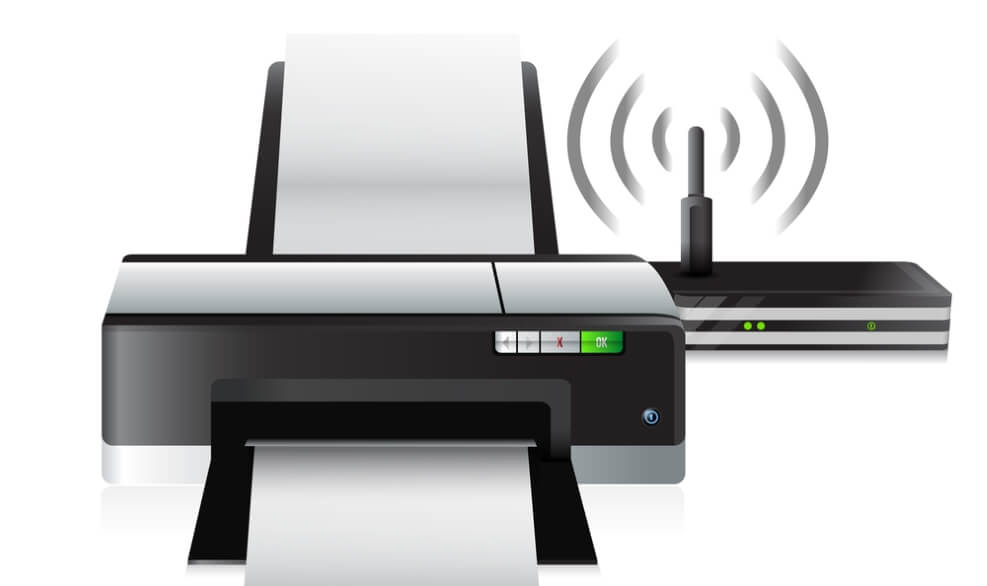Demystifying Network Printers: Understanding Their Functionality And Importance
Introduction
Printers are among the most reliable tools in modern businesses; they enable communication, documentation, and key operations. Yet the advent of network printers has redefined not just printing operations but also business productivity. Dive into this comprehensive guide and unravel what network printers are, their functionality, unique features, and why they have become indispensable in modern workplaces.
What are Network Printers?
Network printers are a remarkable evolution in the printing world, providing an innovative solution to traditional printing. They are advanced devices that can be easily accessed by multiple computers within a network. So what makes them different from conventional printers?
1. Remote Accessibility: With network printers, there's no limitation to a specific computer or location. You can send print commands from any connected device within the network.
2. High Connectivity: These printers connect to your local network via wireless or Ethernet interfaces. That means providing seamless printing solutions, regardless of where you're situated in the network's range.
3. Multitasking Capabilities: Unlike standard printers that may struggle with multiple jobs, network printers manage several print commands simultaneously.

4. Provide Advanced Features: Modern network printers go beyond being merely printing machines. They come integrated with print servers, enabling us to schedule print jobs, handle errors, or even deal with a paper jam.
In essence, network printers are more than just printers; they are a hub of convenience, versatility, and functionality, making remote printing a breeze.
How Do Network Printers Function?
The robust functionality of network printers lies at the heart of their widespread adoption in today's technologically advanced workplaces. But how do these high-performance devices actually operate? Here’s a closer look at the fascinating process:
1. Establishing Connectivity: Unlike conventional printers, network printers don’t need a direct connection to a computer. They're connected to a local network through either a wired Ethernet interface or wireless technology. This means they can swiftly integrate into your existing network setup.
2. Sending Print Commands: A network printer receives print commands from multiple computers connected to the same network. Whether you're in the corner office or the boardroom, you can conveniently send your print commands, and the printer will dutifully execute them.
3. Processing Commands: Once a print command is received, the network printer doesn’t merely print from top to bottom. Instead, it intelligently processes the commands, successfully dealing with multiple print commands from different users.
4. Delivering Printouts: Finally, the network printer efficiently prints the documents. With advancements in technology, modern network printers cater to high-volume requirements and offer faster printing speeds than their traditional counterparts.
5. Handling Issues Remotely: Many network printers offer remote error handling. This means if there's a paper jam or error, the printer server can communicate this to users remotely.
The operation of a network printer is an intricate combination of smart technology and user convenience. With their easy-to-use functionality, these printers are opening up doors to higher efficiency and increased productivity for businesses worldwide.
Why Are Network Printers a Crucial Asset in the Modern Office?
The integration of network printers into modern workplaces has led to a transformative shift in business dynamics. They have not just simplified printing tasks but have significantly contributed to enhancing overall productivity. Let's delve into why network printers have become an essential component in our offices:
1. Cost-Effective for High-Volume Printing: Network printers eliminate the necessity for individual printers at every workstation, significantly reducing costs. One network printer caters to the needs of multiple users, making it an economically sound solution for high-volume printing.
2. Centralized Printer Management: With network printers, you can centralize your printer management. This implies administering all tasks and configurations from a central location, thereby reducing the necessity for individual technical support on multiple devices.
3. Increased Work Efficiency: The feature of multiple users accessing it simultaneously means no 'printer-hopping' is necessary. The employees can send print commands from any workstation within the office. This expedites the workflow, and employees spend less time lining up to retrieve their documents, increasing efficiency.
4. Multi-functionality and Advanced Features: Modern network printers are not limited to printing tasks alone. They offer additional features like scanning, photocopying, and even cloud storage services, transforming them into multi-functional assets.
5. Enhanced Printer Security: Network printers also ensure printer security by enabling administrators to set access permissions, making sure that only authorized personnel can send print commands.

As businesses adapt to remote and hybrid work environments, network printers serve as a tool that enables streamlined operations, promotes efficiency, and bolsters the modern workforce's adaptability.
Comparing Network Printers and Traditional Printers: Which is More Beneficial?
Unpacking the benefits of both types of printers helps in the decision-making process. Let's consider the key aspects of traditional printers and network printers side by side to deliver an informed comparison:
1. Connectivity: Traditional printers require direct connection via a USB or similar cable to a single printer, limiting flexibility. In contrast, network printers, thanks to their Ethernet or wireless interface, support remote printing from any computer on the same network.
2. Efficiency: Network printers are able to process multiple print jobs at once from different devices, offering superior time efficiency. The traditional printer can handle only one job at a time due to its direct connection to a single computer.
3. Accessibility: In the case of a traditional printer, being physically near the printer is a necessity. Network printers transcend this barrier by allowing printing from anywhere within the network's range.
4. Cost-factor: While traditional printers might seem cost-effective due to their lower upfront cost, network printers bring higher long-term savings particularly for larger offices by reducing the need for multiple devices.
5. Management: Network printers enable centralized printer management, allowing remote diagnosis and remediation of tech issues or printer jams, reducing the need for extensive technical support.
Thus, in light of these points:
- If you're working alone or in a small office, a traditional printer might suit your needs.
- If you're working in a bigger office with numerous employees, a network printer is the optimal choice. Its functionality, versatility, and efficiency make it a cost-effective solution.
By considering these factors, businesses can identify which printer type best suits their needs. In many situations, the proactive features, convenience, and collaborative nature of network printers make them a more advantageous choice. However, the final decision should correspond with your specific requirements and printing volume.
What Are Tips for Optimally Utilizing Network Printers?
Network printers, when used efficiently, can significantly enhance productivity and save costs. Here are several strategies to assure optimal utilization of network printers:
i) Proper Setup - Getting the setup right is fundamental. Make sure the network printer is attached to the primary network, and don't forget to enable access for all relevant computers. This step will ensure hassle-free printing for all users within the network.
ii) Regular Maintenance - Just like any other device, network printers demand regular upkeep. Frequent checks on the printer for potential performance issues and maintaining cleanliness are essential to guarantee high-quality prints and extend the printer's life span.
iii) Leverage Advanced Features - Contemporary network printers come packed with advanced features. Familiarize yourself with these and make sure to share this knowledge with all the users. Doing so will lead to a more efficient and user-friendly printing experience.
iv) Cloud Integration - A significant advantage of network printers is their ability to integrate with cloud systems. By connecting your network printer with your business's cloud, you can streamline document access and administration, further boosting efficiency.
In summary, correctly setting up the network printer, maintaining it properly, maximizing the use of advanced features, and integrating cloud systems can dramatically optimize your network printer usage. Network printers are multifaceted devices that, when properly utilized, can revolutionize printing operations in any business setting.
Conclusion
Network printers have revolutionized the way businesses handle printing requirements. They offer immense benefits in terms of convenience, cost-effectiveness, and productivity, making them an integral part of modern workplaces. Ensuring right utilization can potentially lead to smoother operations, enhanced efficiency, and significant time and cost savings.
Related FAQs about what are network printers
What makes Network Printers unique compared to regular printers?
Network printers are designed to service multiple users across a network, either wired or wireless, without needing a direct connection with a computing device. They offer notable features like remote error handling and simultaneous handling of multiple commands that give them an edge over regular printers.
What are potential challenges with Network Printers and how can they be overcome?
Challenges with network printers mainly include setup complexities and network concerns. Overcoming these issues involves proper setup guidance, strong network connectivity, and regular firmware updates. Giving users adequate training on printer use and troubleshooting can also reduce issues significantly.
Why is investing in a Network Printer a wise decision?
Investing in a network printer can boost productivity, save costs, and simplify work processes. Network printers' superior features - such as remote access, multi-user connectivity, and advanced functionalities - make them a valuable asset for businesses, particularly those with a sizeable workforce.


